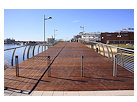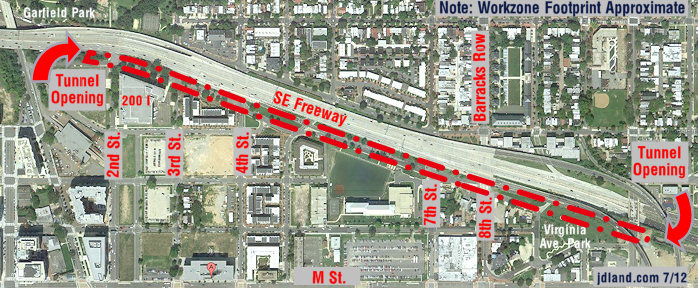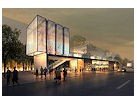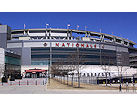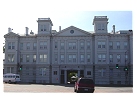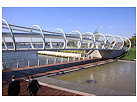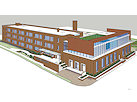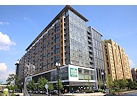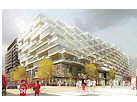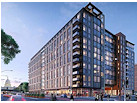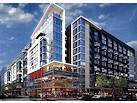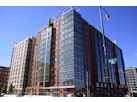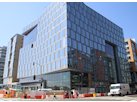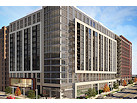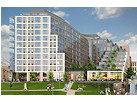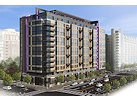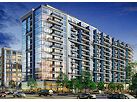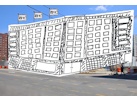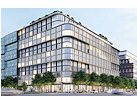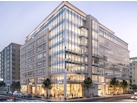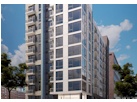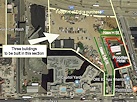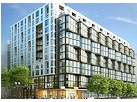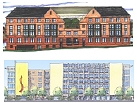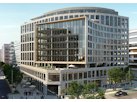|
| ||||||||||||||||||||
Please note that JDLand is no longer being updated.
peek >>
Near Southeast DC Past News Items: Traffic Issues
- Full Neighborhood Development MapThere's a lot more than just the projects listed here. See the complete map of completed, underway, and proposed projects all across the neighborhood.
- What's New This YearA quick look at what's arrived or been announced since the end of the 2018 baseball season.
- Food Options, Now and Coming SoonThere's now plenty of food options in the neighborhood. Click to see what's here, and what's coming.
- Anacostia RiverwalkA bridge between Teague and Yards Parks is part of the planned 20-mile Anacostia Riverwalk multi-use trail along the east and west banks of the Anacostia River.
- Virginia Ave. Tunnel ExpansionConstruction underway in 2015 to expand the 106-year-old tunnel to allow for a second track and double-height cars. Expected completion 2018.
- Rail and Bus Times
Get real time data for the Navy Yard subway, Circulator, Bikeshare, and bus lines, plus additional transit information. - Rail and Bus Times
Get real time data for the Navy Yard subway, Circulator, Bikeshare, and bus lines, plus additional transit information. - Canal ParkThree-block park on the site of the old Washington Canal. Construction begun in spring 2011, opened Nov. 16, 2012.
- Nationals Park21-acre site, 41,000-seat ballpark, construction begun May 2006, Opening Day March 30, 2008.
- Washington Navy YardHeadquarters of the Naval District Washington, established in 1799.
- Yards Park5.5-acre park on the banks of the Anacostia. First phase completed September 2010.
- Van Ness Elementary SchoolDC Public School, closed in 2006, but reopening in stages beginning in 2015.
- Agora/Whole Foods336-unit apartment building at 800 New Jersey Ave., SE. Construction begun June 2014, move-ins underway early 2018. Whole Foods expected to open in late 2018.
- New Douglass BridgeConstruction underway in early 2018 on the replacement for the current South Capitol Street Bridge. Completion expected in 2021.
- 1221 Van290-unit residential building with 26,000 sf retail. Underway late 2015, completed early 2018.
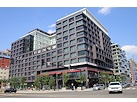
- NAB HQ/AvidianNew headquarters for National Association of Broadcasters, along with a 163-unit condo building. Construction underway early 2017.
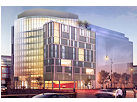
- Yards/Parcel O Residential ProjectsThe Bower, a 138-unit condo building by PN Hoffman, and The Guild, a 190-unit rental building by Forest City on the southeast corner of 4th and Tingey. Underway fall 2016, delivery 2018.
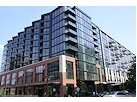
- New DC Water HQA wrap-around six-story addition to the existing O Street Pumping Station. Construction underway in 2016, with completion in 2018.
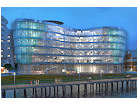
- The Harlow/Square 769N AptsMixed-income rental building with 176 units, including 36 public housing units. Underway early 2017, delivery 2019.
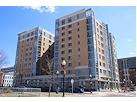
- West Half Residential420-unit project with 65,000 sf retail. Construction underway spring 2017.
- Novel South Capitol/2 I St.530ish-unit apartment building in two phases, on old McDonald's site. Construction underway early 2017, completed summer 2019.
- 1250 Half/Envy310 rental units at 1250, 123 condos at Envy, 60,000 square feet of retail. Underway spring 2017.
- Parc Riverside Phase II314ish-unit residential building at 1010 Half St., SE, by Toll Bros. Construction underway summer 2017.
- 99 M StreetA 224,000-square-foot office building by Skanska for the corner of 1st and M. Underway fall 2015, substantially complete summer 2018. Circa and an unnamed sibling restaurant announced tenants.
- The Garrett375-unit rental building at 2nd and I with 13,000 sq ft retail. Construction underway late fall 2017.
- Yards/The Estate Apts. and Thompson Hotel270-unit rental building and 227-room Thompson Hotel, with 20,000 sq ft retail total. Construction underway fall 2017.
- Meridian on First275-unit residential building, by Paradigm. Construction underway early 2018.
- The Maren/71 Potomac264-unit residential building with 12,500 sq ft retail, underway spring 2018. Phase 2 of RiverFront on the Anacostia development.
- DC Crossing/Square 696Block bought in 2016 by Tishman Speyer, with plans for 800 apartment units and 44,000 square feet of retail in two phases. Digging underway April 2018.
- One Hill South Phase 2300ish-unit unnamed sibling building at South Capitol and I. Work underway summer 2018.
- New DDOT HQ/250 MNew headquarters for the District Department of Transportation. Underway early 2019.
- 37 L Street Condos11-story, 74-unit condo building west of Half St. Underway early 2019.
- CSX East Residential/Hotel225ish-unit AC Marriott and two residential buildings planned. Digging underway late summer 2019.
- 1000 South Capitol Residential224-unit apartment building by Lerner. Underway fall 2019.
- Capper Seniors 2.0Reconstruction of the 160-unit building for low-income seniors that was destroyed by fire in 2018.
- Chemonics HQNew 285,000-sq-ft office building with 14,000 sq ft of retail. Expected delivery 2021.
251 Blog Posts Since 2003
Go to Page: 1 | 2 | 3 | 4 | 5 | 6 | 7 | 8 | 9 | 10 ... 26
Search JDLand Blog Posts by Date or Category
Go to Page: 1 | 2 | 3 | 4 | 5 | 6 | 7 | 8 | 9 | 10 ... 26
Search JDLand Blog Posts by Date or Category
(I'm having so much fun with posts on home plate's arrival at the ballpark, ballpark food, and raze permits that I hate to kill the buzz with a post on parking, but alas it must be done.)
Yesterday the city council passed an emergency version of Tommy Wells's Performance Parking pilot plan, which will be used to regulate curbside parking on streets near the ballpark (as well as in Columbia Heights, along with a new taxicab zone pilot in Adams Morgan and a Visitor Pass pilot in Mount Pleasant). I've got the text of the bill as passed, and there's much more detail than was in the draft version of the bill (though not the detail that everyone really wants, namely the rates and fines), so definitely look at it if you're looking for additional information. A few items that jump out at me (though I'm hoping that Tommy's office sends out a release soon with more info):
* The pilot is only for two years.
* The mayor gets to set the rules, fees, and fines for the zones, but the council gets to set the zones themselves.
* Parking fees cannot be increased by more than 50 cents in any one-month period (or more than once per month).
* Councilmembers and ANCs must be notified of any fee changes at least 10 days in advance.
* "The Mayor shall publish a web site that includes the following: pilot zone boundaries, rules/regulations, information about how to use new parking fee technologies, and a parking pilot project manger's name and contact information." (Until then, you can look at my page on the curbside parking regulations around the ballpark.)
* DDOT has to submit a plan to the council and the ANCs with zone-specific parking management targets and with details on parking charges.
* DDOT has to conduct quarterly public meetings to provide updates on the parking management targets and to receive public comments on the program.
* The mayor has to submit an annual report on the parking pilots with all sorts of statistics.
Speaking of parking, the March Hill Rag has a roundup on the parking plans for the area (similar to my page). And I've been very remiss in not reporting that Feb. 21 Zoning Commission hearing on allowing additional temporary surfacing parking lots in Southwest was continued to March 24 after representatives of DDOT were not in attendance to discuss traffic management plans for the new lots. The Hill Rag has a summary of the Feb. 11 ANC meeting where there was much unhappiness about these potential new lots.
UPDATE: Bad link to bill text fixed.
UPDATE II: DDOT is now announcing a public meeting on March 12 from 6 to 8:30 pm at 20 M St., SE, for "residents and business owners and operators to review and comment on the most recent version of the Transportation and Residential Curbside Management Plan (often referred to as the Transportation Operations and Parking Plan (TOPP)). DDOT will also offer their appreciation to the area residents and business owners for their support and patience during the recent street upgrades in the South Capitol corridor. The meeting is an open workshop that will highlight the numerous parts of the overall transportation and parking operations that will be in effect during events at the new stadium. The TOPP was originally drafted to address concerns by residents on the expected increase in vehicular movement during stadium events in the southeast and southwest neighborhoods surrounding the ballpark. Representatives from the DC Sports and Entertainment Commission (DCSEC) and the Nationals will also be available to address concerns and answer questions." (This is the meeting that was described in testimony at the city council last week as being "at the ballpark." I guess they used "at the ballpark" in the same literary way one could say that the Navy Yard Metro station is "at the ballpark." Ah well.)
|
Comments (0)
|
One quick outbound link this morning, to The Post's piece on the scoreboard at Nationals Park, in advance of today's official unveiling.
Plus, here's a few links for recent items that you might have missed in the flurry of posts around here these days:
* I posted new photos of the ballpark exterior, including the Center Field Gate at Half and N. (I'll probably have new interior photos later today, though the weather doesn't look to be that much better than the last time I was inside, on that icky dreary day.)
* Read the damn Ballpark Traffic Management Plan already. And my pages on on-street parking and taking Metro. And the new pages by Metro and the Nationals about getting to the games. (And listen for the radio ads that debuted yesterday urging fans to take Metro.)
* Monument Realty has won a preliminary injunction preventing WMATA from selling the Southeastern Bus Garage to Akridge.
* Watch for announcements of a community meeting about Opening Day on March 12, at the ballpark.
And, a reminder: the parking garages that look so stark in photos from inside the ballpark will have big banners draped on them by Opening Day. So what you see now is not what you're going to see in four weeks.
|
Comments (0)
|
The Draft Environmental Impact Statement that describes two alternatives for reconfiguring South Capitol Street from just south of Firth Sterling Avenue north to I-395 has now been released, and is available online: there's the compact executive summary for folks who just want the basics, or the full shebang, with 80-plus chapters, appendices, and reports. Note that this draft EIS does not include a final choice for the design of the new Douglass Bridge that would be built to the southwest of the current bridge, though that decision will be made with the final EIS. (I'm a fan of the arched bascule design, because I'm old school.) There's no way I'm going to try to provide a comprehensive overview of what this project is envisioning, so here's some bullet points:
* For Near Southeast, both build alternatives would reconfigure the intersection with the SE/SW Freeway, replacing the existing ramp that begins at I Street with an at-grade intersection underneath the freeway that would have two left-turn lanes to a new ramp. With the removal of the existing ramp to I-395, the intersection and South Capitol and I would also be reconfigured. Also included in this project would be streetscape improvements to New Jersey Avenue, with two travel lanes and two parking lanes and much wider tree-lined sidewalks.
* The main differences between the alternatives for this northern stretch of South Capitol Street are the intersections with Potomac Avenue and with M Street. At Potomac Avenue, there would be either a reconfigured signalized intersection or a large traffic oval connecting South Capitol, Potomac, Q Street, and the new Douglass Bridge. At M Street, a decision will be made between keeping the current underpass for north/south traffic or replacing it with an at-grade intersection. And, in the second build alternative, the K and L street intersections would be opened to cross traffic. There are also many changes planned for South Capitol Street and the Suitland Parkway south of the Douglass Bridge, which are spelled out in the Alternatives section if you're interested. (I'm waiting for a reply from DDOT about whether portions of each build alternative can be chosen a la carte to create a final alternative. UPDATE: As was the case with the 11th Street Bridges EIS, the final plans can indeed take some portions of one alternative and some from the other. So it's possible, as an example, that the traffic oval from alternative #2 could be chosen, but the unchanged M Street intersection from alternative #1 could be chosen, too.
* Depending on which alternatives and which bridge design is chosen, the Draft EIS puts the estimated costs for this project at anywhere between $508 million and $781 million. Flyers given out at the Anacostia Waterfront Community Fair last month indicated that construction on the new Douglass Bridge could begin in 2010, with completion in 2015. The Draft EIS doesn't seem to lay out any timeline for completion of the entire South Capitol Street project.
There are two public meetings planned to discuss the Draft EIS: on March 4 at Birney Elementary School, 2501 Martin Luther King Jr., Ave., SE, and on March 5 at Amidon Elementary School, 401 I St., SW. Both will run from 6:30 to 8:30 pm. The public comment period ends on March 31, and methods for submitting your comments are spelled out on the report site. You can also see print versions of the Draft EIS at a number of local libraries in the area.
|
Comments (0)
More posts:
South Capitol St., Douglass Bridge, Traffic Issues
|
At the Anacostia Waterfront Community Fair a few weeks back, I picked up a card that indicated South Capitol Street Draft Environmental Impact Statement (which is centered around the construction of a new Douglass Bridge) would be released on Feb. 8. So, all last week, I kept checking in at southcapitoleis.com just to see if the site had been updated or if there were any "Coming Soon" announcements. Nada. Imagine my surprise, then, when on Saturday I received a brochure via snail mail (how wonderfully old school!) announcing the the EIS would be released on Feb. 15, with the two public meetings pushed to March 4 and 5, and the deadline for public comment moved to March 31. The web site still makes no mention of the impending release, though you can see the two build alternatives being evaluated. More about this when the draft is actually released.
|
Comments (0)
More posts:
South Capitol St., Douglass Bridge, Traffic Issues
|
.... and the council hearing on Tommy Wells's Performance Parking plan has just ended.
You guys owe me. (Though at least I'm home in my fuzzy slippers watching the telecast.)
But despite there being more than six hours of testimony (which I need to admit here I missed the 90 minutes of, since it wasn't broadcast), I don't really see a lot of new headlines, especially if you've been following along as I've posted on this bill over the past six weeks or so. Here's my impressions of the 4 1/1 hours I did see (I'm guessing the part I missed was a tutorial on the basics of Performance Parking, which I've now seen three times):
* The vast majority of the witnesses who testified were in support of this plan to regulate curbside parking in areas near the ballpark. Residents, business owners, smart growth advocates, and others expressed concerns about certain aspects of the bill, but there were only two people (unless I dozed off somewhere) that came out completely against it. Five ANC 6D commissioners testified (Litsky, Sobelsohn, Hamilton, McBee, and Siegel, and Moffatt was supposed to but wasn't there).
* DDOT director Emeka Moneme says that his agency expects to release specifics on the bill (streets, enforcement hours, meter prices) by the end of next week (so, Feb. 8ish).
* What parking is going to be like on Opening Day was not addressed during the portion of the hearing I saw, which at this point is probably as pressing as any other issue. You can see my report from last week's town hall on Opening Day parking information that filtered out during that session. This may be part of what DDOT is releasing next week.
* Enforcement, enforcement, enforcement. Witness after witness hammered on this point, that all the plans and fines in the world won't work if there isn't strict enforcement of whatever rules are put into effect. Tommy Wells did mention that more enforcement can be handled by the same number of workers under this new plan, since with printed receipts from kiosk meters a parking attendant only needs to check a vehicle once to see if it's within it's legal time limit, rather than showing up once to inventory the cars that are parked in a zone and then return hours later to see which ones are still there and parked illegally. Jim Graham seemed a tad bewildered that Ward 6 residents want *more* enforcement, when so many of his Ward 1 constituents complain about too much enforcement. His comments about lack of resources at DPW and "only so much of the pie" didn't go over too well. Moneme said that he has assurances from DPW that "the resources will be there."
* The desire for strong community involvement in not only the setting of rates but in determining the success of the plan was another theme hit on repeatedly by witnesses who fear that the draft version of the bill gives all power to the mayor and the executive branch without any sort of community input or council oversight. Wells, Moneme, and Jim Graham all seemed to get religion on this point, pledging to make sure that some sort of mechanism is in place to involve the ANCs and get feedback from businesses and residents.
* Guest passes are still a thorny subject, especially whether people will try to copy them (they're going to have holograms) or create a hot black market by selling them. Church parking is equally delicate, though Tommy mentioned the possibility of starting Sunday enforcement of parking laws at 1 pm, to better accommodate churches but prevent all day parking by baseball fans.
* Moneme mentioned a number a times the idea of being able to pay for your parking via your cellphone (which could also send you an alert when your meter was about to expire), although this raised the hackles of witnesses who envisioned Nats fans and Capitol Hill workers repeatedly "feeding the meter" from their seats in section 401 or their desks in the HOBs. (Tommy said that this could probably be addressed.)
* Michael Stevens of the Capitol Riverfront BID testified in support of the plan, but said that the BID feels there should be no on-street parking at all on game days in the blocks north of M between New Jersey and South Capitol, because of the likelihood of traffic congestion. He also asked for the plan to be expanded south to cover Buzzards Point, and mentioned that future revenues from the parking plan should go to amenities such as streetscape improvements and Canal Park.
I believe they will attempt to get this passed at the Feb. 5 city council legislative meeting as emergency legislation, though I don't have that confirmed.
If you want to watch the hearing, you'll be able to do so at your leisure, once it's posted and when you have 25 percent of a day to spare. I'll be checking it out when to see the first portion that I missed, and will update if there's additional news.
|
Comments (0)
More posts:
parking, Nationals Park, Traffic Issues
|
This morning's tidbits:
* It doesn't say anything about smoke machines or laser light shows, but this press release announces that "Showcall, Inc., an event production company based in Maryland, was selected by the Archdiocese of Washington D.C. to produce Pope Benedict XVI's public Mass at the new Washington Nationals baseball stadium on April 17, 2008." As for what that means: "Showcall, Inc. will provide stage and set design and layout, audio visual production, and overall show direction of the public Mass. Showcall will utilize its unique skill set in producing high-profile, high-threat level events and will coordinate with the Washington Nationals to host the first major event in its new baseball stadium. Showcall will work closely with GEP Washington, the overall DMC firm for the visit."
* Kwame Brown's Committee on Economic Development is having its hearing on the ballpark's "noose incident" today at 1 pm. I don't see it on the Channel 13 lineup, but perhaps it'll get shown live or will be broadcast later on.
* Today's two hearings on parking issues in front of the council's Committee on Public Works and the Environment are at 5 pm and 6 pm. My "real life" is on overload for the next few weeks thanks to Super-Duper Tuesday and the metro-area primaries, so I can't make these hearings in person, but I will watch the coverage later this evening and sum up.
* There's also now a joint hearing between the Public Works committee and Kwame Brown's Committee on Economic Development on the Ballpark Traffic Operations and Parking Plan (TOPP) scheduled for Feb. 28 at 6 pm. There should be explanations at this hearing as to how all aspects of getting to and from the ballpark are going to be handled (at first, at least). I believe that this information will be released to the public well before Feb. 28, though I don't know exactly when.
|
Comments (0)
|
This afternoon's Anacostia Waterfront Community Fair appeared to be very well attended, at least during the 90 minutes or so I was there. (Even Marion Barry showed up.) There were three long tables of displays and information from city agencies, commercial developers, and non-profit organizations, and Near Southeast was well-represented--JPI, Velocity, Monument Half Street, Williams C. Smith (250 M Street), Forest City (Capper/Carrollsburg, The Yards), the Anacostia Community Boathouse Association, and the ballpark all had people on hand. (There was also plenty of swag--hope you didn't miss out on your DC WASA lanyard!)
Two news items I came across:
* First, confirmation that 250 M Street will start construction in either late spring or early summer, although they don't yet have any office or retail tenants to announce.
* Second, the Draft Environmental Impact Statement for South Capitol Street (including a new Frederick Douglass Bridge) is going to be released on February 8, with a public comment period to follow. There are two build alternatives that would reconstruct South Capitol Street and the Suitland Parkway (and its interchange with I-295), but neither has been identified yet as a "preferred" alternative. (No design from the four options for a new Douglass Bridge has been chosen yet, either.) There will be public meetings in late February about the Draft EIS, and the web site will be updated soon with information on the draft. I'll write more about this when the Draft EIS is officially released, but it's this study that will decide whether a big traffic oval is built at South Capitol and Potomac, and whether the South Capitol/M interchange could be reconfigured into an "at-grade" intersection (i.e., no more tunnel).
I should have asked about the status of the reconfiguration of the 11th Street Bridges now that that EIS is complete, but I could never get close enough to the table to talk to anyone. (See update below.)
Other developments such as the Southwest Waterfront and Hill East had displays as well, but since my brain can't process anything outside of my borders, you'll have to hunt down information on those projects elsewhere.
UPDATE: I'm finally looking through the pile of flyers I picked up, and here's a few timelines in the official brochure for the event (they're called "targeted schedules", so best not to pen them in just yet):
* Douglass Bridge Replacement: Begin construction Spring 2010, complete in Winter 2015.
* 11th Street Bridges Replacement: Begin construction Spring 2009, no completion date listed.
Also, the 500,000-sq-ft office building by Forest City at the site of the old Capper Seniors building at 600 M has a Spring 2009 start date in one of Forest City's flyers. The other Yards start/completion dates in the brochures are on target with what I've written about previously (see my Yards Phase I page for details).
|
Comments (0)
More posts:
11th Street Bridges, 250 M/New DDOT HQ, 600 M/Square 882/Old Capper Seniors, Boathouse Row, M Street, South Capitol St., Douglass Bridge, Traffic Issues, The Yards
|
Having just about reached my limit when it comes to writing about stadium parking, I'm going to cut to the chase and pass along the biggest items from today's hearing by the Committee on Economic Development on parking and traffic issues at the new Nationals ballpark. (It's a torrent of words, so I've bolded the most important items.)
The session began with ANC representatives testifying about the community's concerns that no traffic and parking management plan has yet been unveiled, and with not many days to go (no one was sure whether it was 82 or 81 or 80 days--it's actually 79, but I didn't pipe up), neighbors are getting increasingly nervous that plans and signage won't be ready by Opening Day. While Tommy Wells's proposed Performance Parking plan could eventually become the mechanism for handling on-street parking near the ballpark, it won't be able to be in place by Opening Day, and so residents want to know how parking is going to be restricted to prevent stadium-goers from descending on nearby streets in search of free parking and bringing what has frequently been referred to as "controlled chaos."
Kwame Brown became frustrated when trying to find out who is actually in charge of coordinating all the government agencies who have a hand in the ballpark and communicating information to the public--"Who do I call? Who's driving the train?" he asked a number of times. After much back and forth with Greg O'Dell of the Sports and Entertainment Commission and Judi Greenberg from the Office of the Deputy Mayor for Planning and Economic Development, it was finally agreed that DDOT is now in charge of organizing and implementing the stadium's traffic and parking plans.
Determining this was a good step for this hearing that had been convened to discuss those plans, except for one small detail--council member Brown's Committee on Economic Development does not have oversight responsibilities for DDOT, so no one from the agency was in attendance.
Oops. (Apparently there had been plans to hold this hearing jointly with Jim Graham's Committee on Public Works and the Environment, which oversees DDOT, but that did not come to pass.)
It was said that DDOT will be unveiling the traffic operations and parking plan next week, though of course no one from DDOT was actually there to confirm or deny this.
Greg McCarthy of the Nationals testified about the team's continuing efforts to plan for the onslaught of fans, ranging from the mailing next week of parking information to season ticket holders to a planned media onslaught beginning in February to educate stadium-goers about the best ways to get to the park. (Short version: Take Metro! Walk! Bike! Park in Metro parking lots! Don't drive to the ballpark unless you've already got a parking pass!)
There still is no signed agreement between the Nationals and the city for use of RFK as free satellite parking for non-season-ticket holders, though clearly both sides anticipate it will get done, especially since the Nationals are working out the best routes for the free shuttle buses they plan to provide from RFK to the new stadium. (But Kwame Brown did not seem too enthused that the city might not be getting any revenue from the parking spaces.)
The team anticipates having 5,000 spaces for season ticket holders available in lots within walking distance to the ballpark--and, other than one lot that sits on the west side of South Capitol Street underneath the freeway, all lots will be in Southeast and none will be in Southwest.
Tommy Wells focused a number of times on the idea of the neighborhood embracing the ballpark as part of its culture and part of the character of the community. How neat it will be for residents to be able to walk to games, he said, expressing his hopes that the ballpark is a positive experience for both fans and residents. (Putting the stadium there "was not a hostile act by the government," he said). He also spoke of how the stadium's on-time and on-budget completion should be a real celebration for the city, but that he doesn't want it to become known as the "ballpark with a traffic catastrophe."
My favorite moment of the hearing was when discussion turned to how exactly the onslaught of papal groupies will be handled when the Pope comes to the ballpark on April 17: I realized that all this time I had assumed Pope = Mass = Sunday, when in fact the event will be on a Thursday morning, which will make traffic and parking that much more of a challenge. Start planning your vacation day now.
Other items of interest:
* Charter buses are expected to be parked across the South Capitol Street bridge during games.
* The Nationals have secured 4,000 of the 5,000 spaces they are eyeing near the ballpark, and expect to have the other 1,000 by Opening Day. There will be about 3,000 spaces at RFK, in Lots 7 and 8, and the team will be running a test of the RFK shuttle buses on Friday.
* There will be 130 handicapped parking spaces in the two lots on the ballpark site.
* The Navy Yard Metro station is expected to be ready by Opening Day.
* The Nationals will be responsible for clean-up around the ballpark and surrounding streets after games, most likely through an augmentation of the Capitol Riverfront BID's "clean teams".
* There are still plans for two job fairs to be held in Southwest, perhaps on Feb. 9 and 23 at Greenleaf Rec Center.
There's probably other items I missed that some people might be interested in, but I think that's more than enough for a Friday night.
It's anticipated that a joint hearing of both the Committee on Economic Development and the Committee on Public Works and the Environment--which oversees DDOT--will be scheduled soon.
The broadcast of the meeting is already available on demand, if you have three hours of your life you're not doing anything with. I've also posted the prepared statements of the witnesses from today, which you should definitely read to get more information than I've been able to summarize here. Also available is a press release from Kwame Brown's office about the hearing, in which he calls for "enhanced coordination from DC agencies and increased public involvement."
UPDATE: Here's the WashTimes article on the hearing. And the Examiner's.
|
Comments (0)
|
This week's Ballpark and Beyond column in the Post is my summary of ANC 6D's deliberations on the ballpark liquor license. It also references a meeting held last night between community leaders and city and team representatives (though my deadline was before the meeting, so the column couldn't actually include anything *from* the meeting).
The meeting included updates on the road improvements in the area and the Navy Yard Metro station upgrades, both of which are still on track to be basically done by opening day (the Metro station might "still need another coat of paint", it was said, but will be "serviceable").
The Nationals are still working out their parking plans, not only in terms of the lots near the ballpark but also the satellite parking at RFK, and all the additional planning that goes with it (traffic flow, signage, shuttle buses, drop off/pick up locations, etc.). It appears as of now that there might not be season-ticket-holder lots in Southwest at all, not even at Buzzards Point. There was also mention that stadium-goers will not be funneled through the South Capitol Street exit of the freeway--the team is going to try very hard to move fans through all the other close-by freeway exits, but not South Capitol Street.
Circulator buses will not be part of the transit plans for the first season. But they're planning plenty of bike racks around the ballpark perimeter, and are also still working on a bicycle "valet" parking service.
Also, there's tentative plans for two stadium job fairs, possibly on Feb. 2 and Feb. 26 (details still being worked out).
And, everybody knows that the first few games will be "a challenge."
The general tone of the meeting was more cooperative and collegial than some of these meetings have been in the past (maybe because Tommy Wells was there for the first part and everyone wanted to be on their best behavior). There's plans for more meetings and workshops between these "stakeholders" (I really hate that word) to try to hammer out the best plans for traffic, pedestrian flow, and "curbside management" (aka on-street parking) before it's all then unveiled to the community at public meetings. There was also agreement that the group should get together after the first homestand in April to talk about what works/what doesn't.
UPDATE: Speaking of public meetings, here is the official announcement about the Jan. 11 city council Committee on Economic Development oversight hearing on "Parking and Traffic Plan for the Nationals' Stadium." It contains information on how to testify at the hearing, if you're so inclined.
|
Comments (0)
|
There has been much discussion by residents and city officials over the impending "apocalypse" of traffic and parking congestion with the opening in April of the new ballpark. Residents not only in Near Southeast (all 400 of you) but in Southwest and on Capitol Hill have been waiting for the city to announce exactly how on-street parking will be handled during games, as there is great concern as to whether residents will still be able to park on their streets and won't have to deal with hundreds or thousands of cars circling the neighborhoods looking for free parking.
It's been thought that the model used at RFK--special parking permit stickers for residents to put on their cars--would be ported over to the new ballpark area, but over the past few months council member Tommy Wells and his staff, along with DDOT, have been working on a pilot plan they hope could address not only the parking issues at the ballpark but also the parking problems seen on Capitol Hill along Pennsylvania Avenue, Barracks Row (Eighth Street), and the streets around Eastern Market. They are looking for ways to balance the needs of residents with the impact on businesses if parking is hard to come by, and are looking at a concept called "Performance Parking." Here's my five-cent summary:
"Retail" streets would have the hours of metered parking extended to seven days a week until late in the evening, and with the prices to park at the meters raised to a level that would discourage some people from arriving by car, opening up more spaces and reducing double-parking and congestion. The adjacent residential streets, now covered by Zone 6 parking rules that ostensibly only allow two hours of visitor parking during weekdays (but are dependent on the parking enforcement folks tracking the cars to know how long they've been there) would see the installation of meter kioskson one side of the street, where nonresidents could park for no more than two hours even until late in the evening and on weekends. (Residents could park on both sides of the street as long as they want.)
These rules would extend with slight tweaks to the streets around the ballpark: "Retail" streets in these areas would allow longer stretches of parking (four-plus hours), but would have rates for metered parking comparable to the amount charged in pay lots, to discourage ballpark-goers from believing that on-street parking would be any cheaper than what's available in existing lots and garages. And with the residential streets having meters that wouldn't allow parking for longer than two hours, most people going to three-hour-plus baseball games would avoid parking on those blocks.
In other words, these restrictions would tell visitors--park in a lot, or take Metro, or walk, or ride your bike, but don't expect to drive down and find a space for free on a street somewhere.
One other facet of this plan would be to use the revenue from these much higher on-street parking rates to pay the cost of the new kiosk-type meters (that cost about $7,800 a pop), the cost of the extra enforcement needed to make the plan work, and also improvements to the streets and the communities to make alternative modes of transportation more enticing (fixing sidewalks, adding bike racks, making bus shelters better, etc.).
This plan has been previewed for local businesses and the ANCs (today it was the media's turn), and it's hoped that a bill creating this special pilot project can start its path through the city council process in early January. Alas, this would not be enough lead time to get it all in place before Opening Day, so there will probably be some tumult during the early part of the season as the city tries to keep stadium visitors from taking over the residential neighborhoods.
You'll no doubt be reading much more about this idea over the coming months, and there will be public meetings and refinements and many words written about it all, I'm sure. And of course one other piece of the puzzle--the locations of the various lots where the Nationals will be directing season-ticket holders to park--has yet to be made public. Eventually Wells's office will release maps (perhaps soon) showing the streets that could be designated as retail or residential, along with other documents providing far more detail than what I've previewed here.
In the meantime, I'm going to do something I've never done in the nearly five years that I've been running this Near Southeast site--I'm going to open up the floor to comments about this idea, that then hopefully can be read by city officials and other residents to see what people's impressions are of the plans. But be forewarned, if this little low-tech experiment goes off the rails and people start getting out of control, I'll close it down and won't be inclined to give it another shot. So behave. Of course, you'll be commenting on something you probably need to learn much more about to truly be informed, but when does that ever stop anyone on the internet?
UPDATE: Here's a story from the Post on Wells's parking plan. " 'The ballpark visitors are going to be very tempted to look for cheap parking' on city streets, said Neha Bhatt, a planner in Wells's office. 'We've got to get that out of people's head that free parking exists here.' " The story also reminds me to mention that plans are to make Buzzards Point off-limits to on-street parking during ballgames (though it's likely some cash lots will be built there).
Also, there's going to be an Committee on Economic Development oversight roundtable on "Parking and Traffic Plan for the Nationals' Stadium" on Jan. 11 at 10 am. (It was originally scheduled for this Monday, the 17th, but they felt like there hadn't been enough public notice. I'll say--I hadn't even heard about it!)
UPDATE II: The WashTimes piece on the plan.
|
Comments (0)
|
251 Posts:
Go to Page: 1 | 2 | 3 | 4 | 5 | 6 | 7 | 8 | 9 | 10 ... 26
Search JDLand Blog Posts by Date or Category
Go to Page: 1 | 2 | 3 | 4 | 5 | 6 | 7 | 8 | 9 | 10 ... 26
Search JDLand Blog Posts by Date or Category



